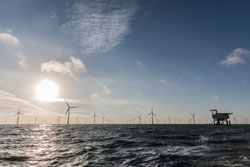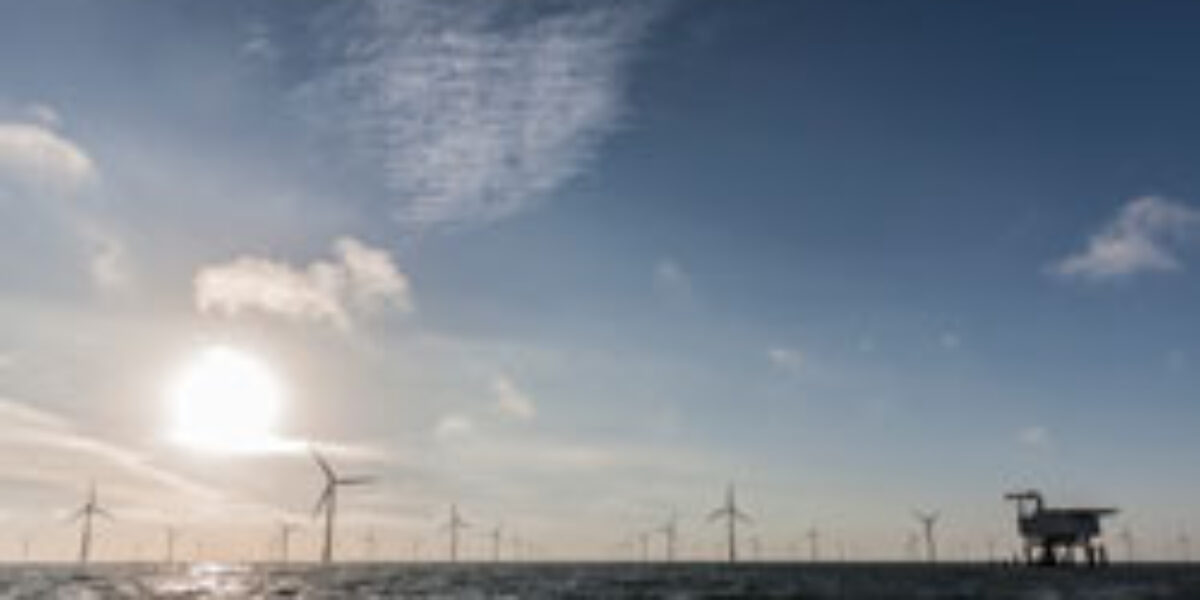Esbjerg – Denmark’s Energy Metropolis

Being experts in handling the oil, gas and wind activities in the North Sea, Esbjerg companies have for many years contributed to its position as the offshore capital of Denmark and the newly achieved membership of World Energy Cities Partnership marks Esbjerg as one of the leading offshore cities in the world.
Offshore expertise
Though the oil and gas activities in the North Sea have existed since the 1970’s, this market still has potential. The trade organisation, Oil Gas Denmark, estimates that there are still unexplored oil and gas resources worth 25 bio€ in the North Sea. The status of the port of Esbjerg as leading harbour for handling offshore wind turbines has been indefeasible since the establishment of Horns Rev I and II. Horns Rev III is a new 400MW wind farm just outside the shores of Esbjerg. In 2017, installation will begin and this will generate further activities for Esbjerg companies. It is expected that the installed offshore wind capacity in 2020 will be five times the present level. Companies like Maersk Oil & Gas, Hess, Rambøll Oil & Gas, DONG Energy, Siemens, Vestas and Vattenfall are leading companies within the offshore activities. However, the company structure of Esbjerg is many small companies. Altogether, the city counts 250 energy companies – of which 177 are in the offshore industry alone.
Intelligent energy
Distributing and using energy intelligently is the challenge of the future. In Esbjerg, one of the leading electricity and telecommunication distributors in the country takes up this challenge and based on EU’s strongest fibre network, SE aims to contribute to transforming the society towards sustainability.
Esbjerg among the 20 most important energy cities of the world, With oil, gas, wind, intelligent energy and bioenergy gathered at one place, the status of Esbjerg as Denmark’s EnergyMetropolis is confirmed. Consequently, Esbjerg was admitted in the World Energy Cities Partnership (WECP) gathering the 20 most important energy cities in the world. Esbjerg is the only Danish member city.
Port of Esbjerg – the energy port
Located in the south-westerly corner of Denmark, facing the North Sea, the UK and the western part of Europe, the port of Esbjerg is an excellent choice if you want to connect Danish trade with Europe. With a fully developed hinterland infrastructure including road and rail, the port can accommodate the largest heavy-duty transports allowed on public roads. The wind industry is one of the most important industries in Denmark generating thousands of jobs and the port of Esbjerg is an important part of this industry and a vital piece of infrastructure assisting both global and national companies developing their business. Today, the port of Esbjerg is the largest port in Denmark with an area of 4,000,000 m2. With an area of 650,000 m2, the new east port is the largest port area in Denmark and can handle offshore wind turbines and foundations. Once fully developed, the east port will cover an area of 1,000,000 m2 and more than 2 km of heavy-duty quayside.
Facts:
• Esbjerg is Denmark’s fifth largest city.
• In Esbjerg, 250 companies employ more than 13,500 people within the energy sector.
• 75% of Danish wind turbine export pass through the port of Esbjerg.
• Esbjerg is the offshore capital of Denmark and one of the leading offshore cities in the world.
• 5,5 billion €: Investments in the Danish offshore oil and gas sector during the next 5 years
• 4 of the 5 GW wind power in the North Sea have been installed from Esbjerg
• 14 %: The expected growth within offshore wind turbine in 8 years
• In 2020, 5 times more offshore wind capacity installed
“Having our headquarters elsewhere would not have resulted in 1,000 employees” Rambøll Oil & Gas would not have reached 1,000 employees if the company had not settled down close to the offshore sector in Esbjerg.
“It has been crucial to the development of the company that our headquarter is located in Esbjerg. The clients are present in Esbjerg because the city is the closest they can get to the oil and gas installations in the North Sea. Furthermore, the port, traffic by sea and helicopter transport to the fields are also important factors,” John Sørensen, CEO, says.
When Maersk Oil and Gas moved to Esbjerg in 1991, the Rambøll oil and gas division followed shortly.
“Since then, an offshore cluster and knowledge environment have been built in Esbjerg and that is very important to our company. We can draw on each other’s knowledge and even though some of us are competitors, we are also business partners. In Esbjerg, we work closely with all our clients both the small suppliers and the big contractor companies – we are stronger together; that is the spirit in Esbjerg,” John Sørensen says.
Rambøll employs about 350 people in Esbjerg. The oil and gas division alone has grown in recent years, which means that the division employs about 1,000 people in several countries.
“Even though the supply of senior oil and gas engineers is limited, it has become easier for us to attract employees because of the strong business cluster in Esbjerg. We also have a great partnership with the two universities – mainly Aalborg University Esbjerg – where we recruit many newly graduated engineers. Overall, we benefit strongly from the many networks in the city; Esbjerg Petroleum Club, where everyone in the business is welcome, Esbjerg Business Development and the Management Societies. Additionally, we cooperate with Offshoreenergy.dk, who has its office in Esbjerg, and Oil Gas Denmark, who is quite often in Esbjerg,” John Sørensen says.
Company statements
Niels Duedahl, CEO, SE and 2013 Leader of the Year in Denmark: ” The strong electricity and fibre based infrastructure that we rolled out in the region and Esbjerg’s position as EnergyMetropolis arouse interest all over the world, and big companies look our way. This is a natural place for us to run our business”
SE is one of the biggest energy and telecommunication providers in the country. Recently, the company built its brand new headquarters in Esbjerg in a spectacular plus energy house.
Steen Brødbæk, CEO, Semco Maritime: “We have experienced growth rates of 40% in 2011 and 2012. In 2012 alone, we hired 500 people in Denmark, most of them in Esbjerg.” Semco Maritime started as an ordinary electrician company but has developed and is now a global project engineering company providing the global energy sector with projects, solutions and manpower.
Bent Johansen, Head of Renewables Wind Operations Denmark, Vattenfall: “In Esbjerg, we find the manpower and the competences that we need to run our offshore wind farms.” Vattenfall is one of Europe’s biggest electricity producers. The company has its Danish wind power centre in Esbjerg. From this centre, Vattenfall supervises their Danish off- and onshore wind farms. Together with DONG Energy, Vattenfall owns one of the world’s biggest offshore wind farms, Horns Rev, placed on the shores of Esbjerg.
Søren Nørgaard Thomsen, CEO, ESVAGT: ”Actually, we could run our business from any other port than Esbjerg, but we would fear to lose the spirit and culture of growth that exist in Esbjerg”. He continues, “In addition Danish mariners are highly skilled. They are known for their craftsmanship and they have a developed sense of business. They are proud of what they do. And that is the base of our company”. ESVAGT is a leading provider of offshore safety and support at sea primarily in and around the North- and the Barents Sea.


